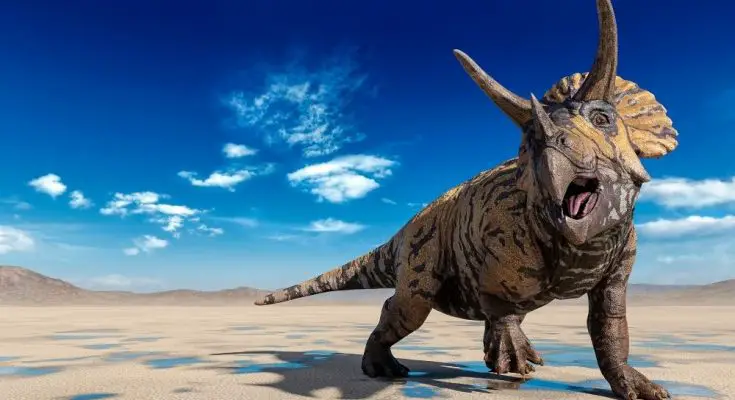All species of dinosaurs are wildly fascinating. Some were massive plant-eaters, while others were small yet ferocious. Plenty of dinosaurs also had skin that was like a natural suit of armor to protect them from predators.
Of the countless species of dinosaurs, the Triceratops is one of the most popular dinosaurs among children and adults alike. This could be thanks to its fascinating look, its massive size, or that beautiful frill! This beloved dinosaur was one of the last to die off, living until the mass extinction event around 66 million years ago. Paleontologists usually find Triceratops fossils in North America, including in North Dakota, Colorado, Wyoming, and Saskatchewan.
If you’re a dino-lover, then you’ve come to the right place, because we’ve got some interesting facts about Triceratops for you!
Its Frill Was Important
The Triceratops’s frill was vital for several reasons. First, it protected its neck from predators in the event of an attack. Additionally, the Triceratops needed its frill and horns to defend its territory while battling its kind for dominance. Many people believe the dinosaur used its frill to attract mates, but it’s also quite possible that the frill helped the Triceratops regulate its body temperature and possibly even communicate with others. This is because the dinosaur could indicate different emotions using its frill.
It Had a Huge Head
Another interesting fact about Triceratops involves its head: it had not only one of the largest head-to-body ratios but also over 800 teeth, which it used to devour grass and other greenery.
It Was a Loner
Some species of dinosaurs lived in herds, but the Triceratops was likely not one of them. Most research shows that these beasts probably lived on their own during adulthood. Interestingly, this was one of the most common animals roaming the Earth at the time.
It Was Deadly
The Triceratops was an herbivore, but that’s not to say it couldn’t hold its own in a fight. In fact, many scientists theorize that this dinosaur could take on or even kill a T. rex if it had to defend itself. It was able to do this thanks to its large horns. Scientists even discovered a Triceratops that had battle wounds—likely from a T. rex—yet that managed to survive. This beast was a fascinating one!



